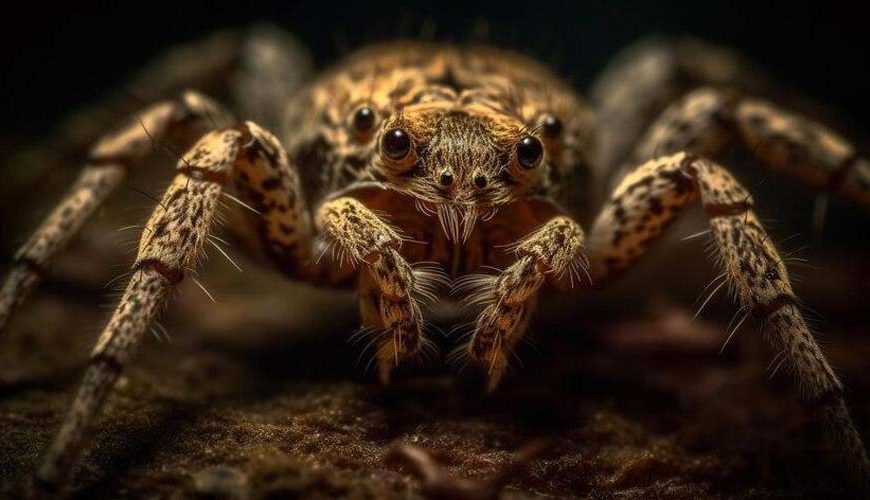Some of the most intriguing and ancient animals on Earth are arachnids. Over 400 million years have passed since these eight-legged invertebrates first appeared on Earth, and they have evolved to fulfil a variety of biological tasks in almost every terrestrial ecosystem. Arachnids exhibit a remarkable variety of shapes and actions, ranging from tireless ticks to silk-spinning spiders. Continue reading for an in-depth guide designed for inquisitive young minds about the world of arachnids.
What Is an Arachnid?
The phylum Arthropoda, which comprises common creatures like insects, crustaceans, and myriapods, is also related to arachnids. Important anatomical traits shared by all arthropods include segmented bodies, exoskeletons, and jointed limbs. Arachnids in this phylum are further categorised according to distinctive characteristics:
- They have eight legs as adults, unlike insects which have six.
- Their head and thorax segments are fused together into a cephalothorax. This is where the legs attach.
- They lack wings and antennae that many insect groups possess.
- Most have simple eyes on the top of their cephalothorax. Their vision is not as sharp as human sight.
- Specialized mouthparts include fang-like chelicerae and pedipalps, which are sensory appendages near the jaws.
- The abdomen is the posterior segment behind the cephalothorax. This houses their reproductive organs, silk glands, and more.
- Most arachnids breathe using book lungs or tracheae (air tubes) rather than the spiracles insects use.
With over 100,000 named species, arachnids come in a spectacular variety of shapes, sizes and colours while sharing these fundamental attributes.
Major Arachnid Groups:
Arachnids are divided into 11 extant orders. Some of the most prevalent groups include:
- Spiders (Order Araneae):
- Scorpions (Order Scorpiones):
- Ticks (Order Parasitiformes):
- Mites (Subclass Acari):
- Harvestmen (Order Opiliones):
The spider family likely conjures the most vivid arachnid images. Over 40,000 spider species grace nearly every terrestrial environment on Earth. From tiny jumping spiders to giant tarantulas, spiders are perhaps the most diverse arachnid order. They subsist on liquid diets by injecting venom into prey and ingesting the liquefied insides. While only a handful of species pose danger to humans, all spiders produce silk from abdominal spinnerets. They use silk to build webs for capturing prey or other structures like egg sacs and dragging lines. Enter any garden or woodland habitat and you’re sure to encounter the architectural masterpieces of orb weaver spiders and others.
Scorpions number over 2,500 identified species strong. These nocturnal hunters terrify and captivate with their iconic barbed post-abdomen tails, used for both defence and injecting venom. Only about 25 species have potent enough toxins to kill a human. Scorpions mainly feed on insects, spiders and other small invertebrates which they crush with strong pedipalps before ingesting. Certain species exhibit unexpected social behaviours that scientists have discovered, such as group dens and moms even carrying their young on their backs.
Globally, more than 800 kinds of ticks have been found, and nearly all of them are obligatory parasites. Ticks require the blood of vertebrate hosts, such as mammals, birds, reptiles, and amphibians, in order to thrive. They may spread dangerous diseases like Lyme disease through their bites. Hard ticks have a tough dorsal shield while soft ticks lack an upper covering. Ticks display specialized behaviours like positioning themselves on leaves or grasses to latch onto passing hosts. Though not as rich in species as other arachnids, ticks occur in environments from rainforest soils to arid deserts.
At over 48,000 identified species, mites may be the most abundant and diverse arachnid group. Ranging from microscopic to a few millimetres long, mites inhabit staggeringly unique habitats. Gardening soil, cheese rinds, mammal skin, bee hives, tide pools – mites have colonized them all, displaying extraordinary adaptations for life in each environment. Some species like dust mites and scabies mites directly interact with humans, triggering allergies or skin irritation. Other mites play beneficial ecological roles like decomposing organic matter.
Sometimes called daddy longlegs, harvestmen are immediately recognizable by their dense oval bodies balanced on wiry, elongated legs. With over 6,000 species, they thrive worldwide in damp places that provide adequate moisture. Contrary to popular myth, their legs do not detach easily when pulled. Each leg comprises seven segments that allow flexible movement. Unlike most arachnids, harvestmen do not have silk glands or injectable venom. They feed using chelicerae to scrape or pierce soft-bodied prey. When threatened, many species shake their bodies rapidly, making their legs blur together to startle predators.
The Ancient Evolution of Arachnids:
Arachnids have inhabited Earth for over 400 million years, adapting from aquatic origins to conquer land. Key events include:
- Ancestral arachnids transitioned from sea to land during the Silurian/Devonian Periods over 400 million years ago.
- Trigonotarbid arachnids were early terrestrial species arising in the Carboniferous Period 359-299 million years ago, but are now extinct.
- Major modern arachnid orders like spiders, scorpions, harvestmen and mites emerged and diversified during the Carboniferous and Permian Periods.
- Spiders gained silk-spinning abilities in the Cretaceous Period 145-66 million years ago, enabling new hunting strategies.
- Ticks branched from mite-like ancestors in the Cretaceous before proliferating in the Cenozoic Era.
- Scorpions exhibit remarkable longevity, with modern species nearly identical to 400-million-year-old Silurian ancestors.
- Accelerated speciation into diverse niches occurred in the Cenozoic, driving huge modern arachnid biodiversity.
- Though constantly evolving, arachnids retained their fundamental body plan for hundreds of millions of years, a testament to its enduring success.
Amazing Arachnid Oddities for Young Minds
Beyond summarizing basic biology, highlighting some weird and wonderful arachnid traits helps spark awe and appreciation in young learners:
- Tarantulas and other mygalomorph spiders have 2 sets of book lungs unlike other spider families, allowing them to extract more oxygen to support their large size.
- The Goliath birdeater spider from South America boasts a record leg span up to 12 inches (30 cm), granting it the largest size of any spider species.
- Daddy longlegs harvestmen detect predators through highly sensitive slit sensillae organs on their legs that pick up even minute vibrations.
- Several arachnids like vinegarroons and sun spiders whip up a defence spray containing acetic acid. This gives their chemical weapon a vinegar-like smell!
- Scorpions produce antimicrobial compounds in their venom, giving themselves protection against potential pathogens they encounter living in the wild.
- Spiders have blue rather than red blood because their oxygen transport molecule hemocyanin contains copper instead of iron atoms like in haemoglobin.
- Some spiders like ogre-faced spiders purposefully point their spinnerets upward to mimic ants and avoid predation.
- Contrary to myth, harvestmen daddy longlegs do not have potent venom and their legs do not fall off when pulled. Their long legs are very firmly attached!
The mystery surrounding arachnids is unending, whether they are scuttling over the woodland floor or clinging to a window pane. Children who learn about the biology and habits of spiders, scorpions, and other fascinating critters will have a lifetime of experiences. With over 100,000 unique species now identified, scientists are just now beginning to fully investigate the wonderful world of arachnids. Young explorers may keep discovering fresh tales of eight-legged wonder if they are armed with curiosity and respect for these fascinating creatures.
For more such interesting blogs, Visit EuroKids















